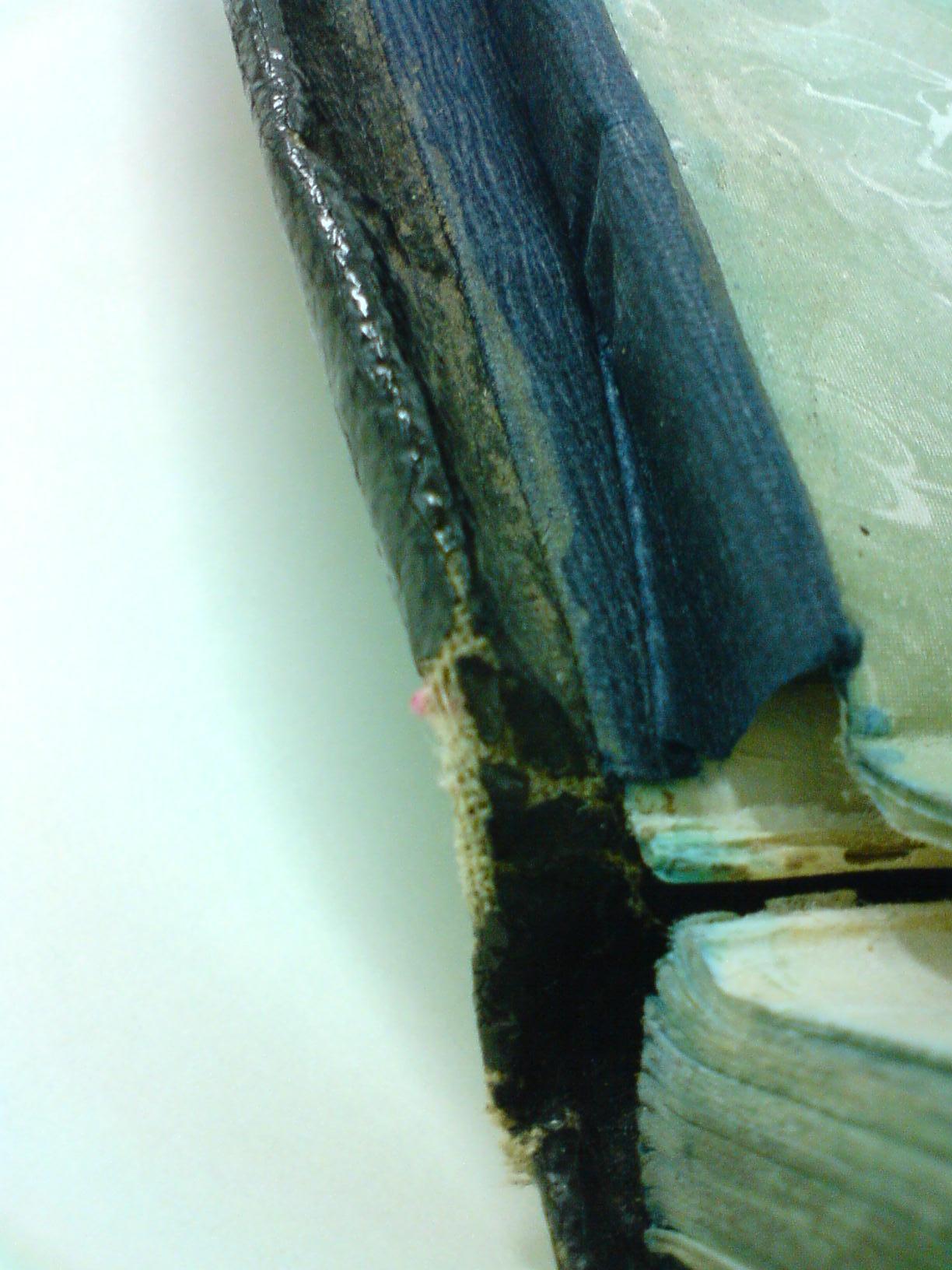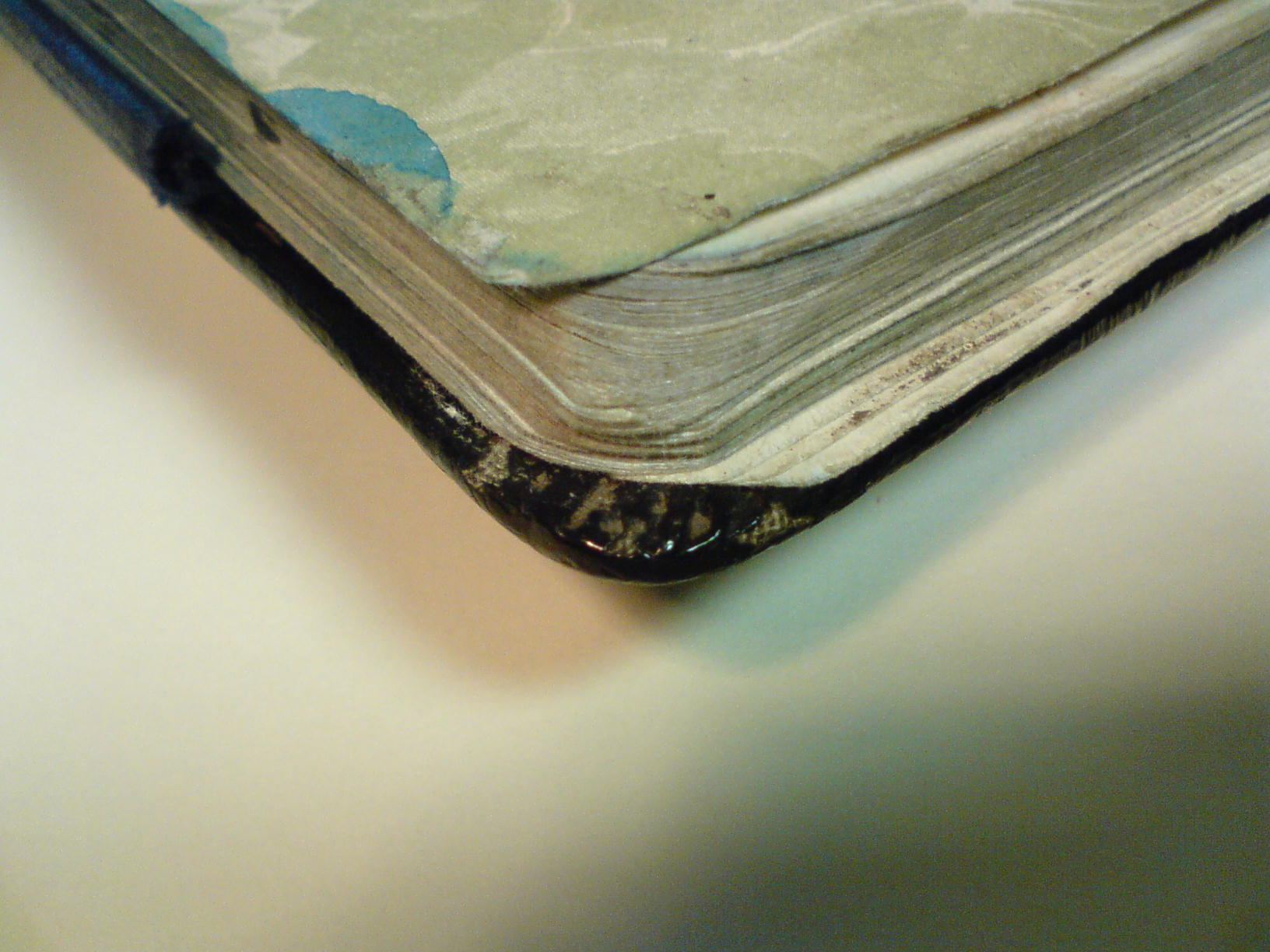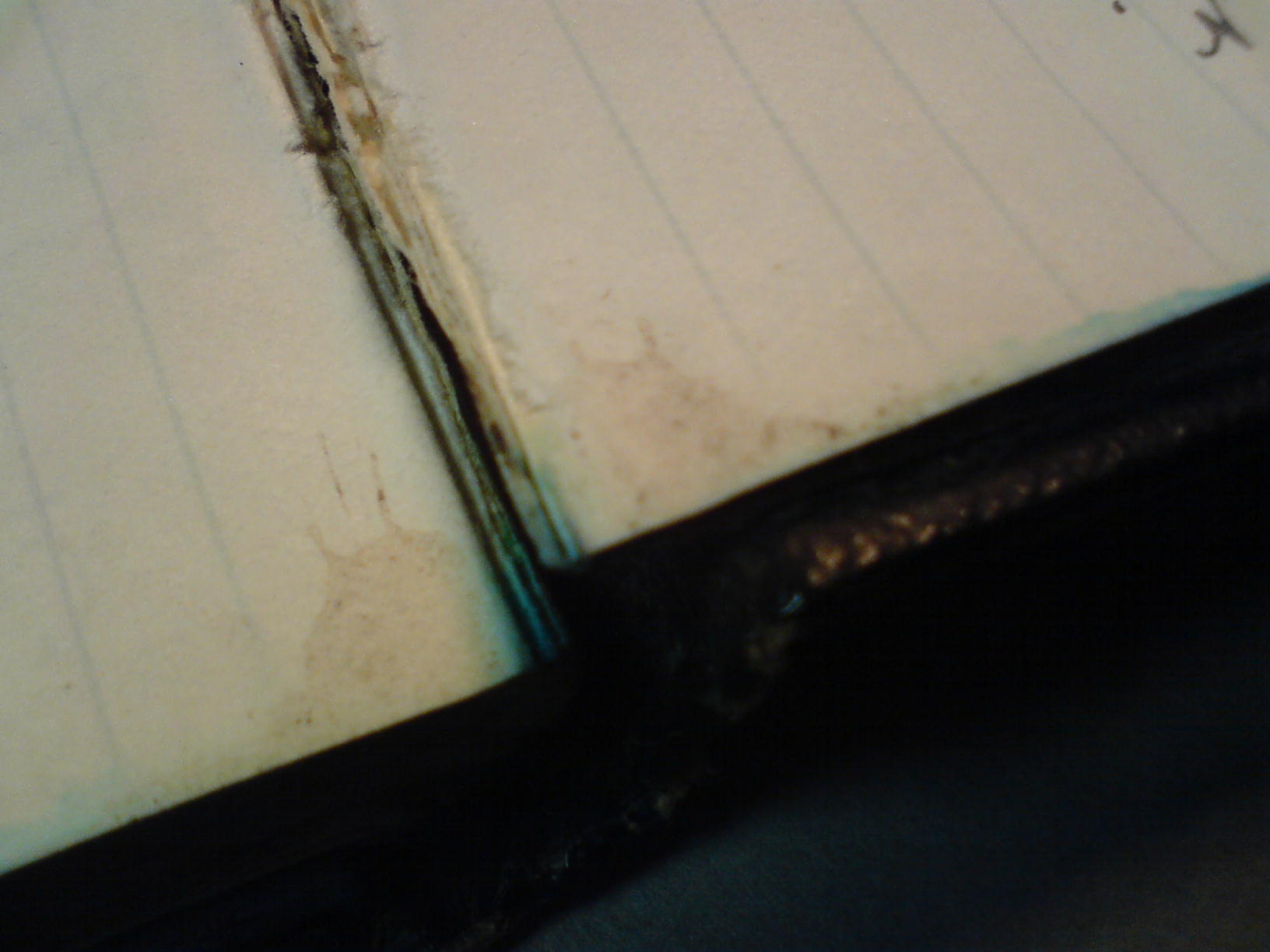Just what is it about trench mud?
Late yesterday afternoon I finally found the much vaunted mud on the journal which Siegfried Sassoon was keeping at the time of the battle of the Somme. The ‘Dream Voices’ exhibition was dismounted on Tuesday and in the process of returning the items to their rightful places I spotted a volume that showed some signs of damp damage to the fore edge of the text block. Closer inspection also revealed dried mud:
Images of MS Add.9852/1/7
Click twice on an image for a zoomable version
I admit I had been sceptical about the reputed presence of trench mud. From what I can tell from the condition and content of Sassoon’s papers he was a neat and tidy sort of person. I had presumed that he would have cleaned up anything that had become soiled. The outside of the cover is made of cloth with a shiny finish and it would have been easy wipe. On the inside however attention to removing the mud appears far from meticulous. The mud is in the grooves around the inside cover of the notebook where the end papers overlap the covering on the boards and there are some ink bleeds at the edges of the pages.
Since the discovery, three questions have been bothering me:
Firstly, why is there so much interest, even excitement, about mud with regard to First World War archives and objects? Does the popular portrayal of the First World War somehow require the presence of mud on objects as a kind of validation?
Secondly, why have I found the presence of this mud particularly disturbing? This is interesting given the other macabre things that I have seen included in archives from time to time (e.g. teeth, hair, and bones both animal and human).
Thirdly, why did Sassoon not remove the mud?
Answers on a virtual postcard please…





